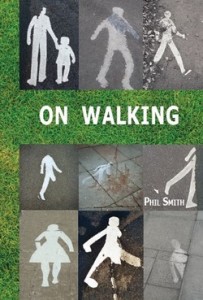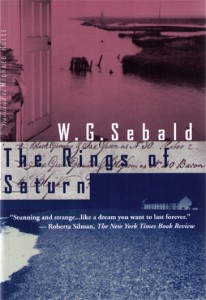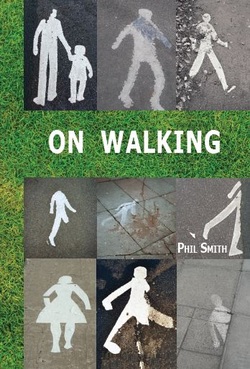 A review of On Walking, by Phil Smith [Triarchy Press, 2014]
A review of On Walking, by Phil Smith [Triarchy Press, 2014]
Words: Gareth E. Rees
Location: East Anglia
Phil Smith (aka Crab Man, Mytho, Anton Vagus, Spacetart) fuses walking with performance art. He describes his practice as mythogeography – a method of sabotaging official narratives through experimental drifts to unlock a “multiplicity of stories” in the landscape.
If you’re willing to disrupt your thought patterns, walk without a destination, and look with curiosity at the ugliest, most mundane details, you’ll find that our cities and countryside are ripe with hidden meanings, visual puns and unintended contradictions.
Ghostly apparitions appear in paint smeared walls. Randomly scattered sticks form human avatars. Broken or defaced signs tell bawdy jokes. A fly-tipped door is a portal to another world.
In his short (also highly recommended) book Enchanted Things, Smith writes:
“So much in the visionary landscape with its circus of philosophising objects, floating text and people-machines goes unremarked. Esoteric symbols in petrol station logos, accidental poems made by the breaking of signposts, bathetic business names and massive geometrical puns go ignored.”
Smith’s latest book, On Walking brings together his practical methods and philosophy with an extended journey through Suffolk, following the steps of W.G Sebald’s The Rings of Saturn.
This duality of purpose forms a two-tier narrative. In larger serif font, Smith extols the virtues of experimental walking, revealing practical methods of jolting yourself out of your usual patterns of thought and locomotion: start your drift at an unusual time of day; take the bus for seven stops then get off and explore; explore objects with your fingers; leave objects in random places; collect things you find and create a narrative from them; make poems from house names; carry around a burden, such as a door; walk in character as someone else.
Beneath, in a smaller san-serif font, Smith tells the tale of his journey in Sebald’s footsteps. He is by no means reverential to Sebald’s classic book, a blend of fact and fiction which takes geography as a starting point for a meander across time, history and literature.
“I was following his text with no greater empathy and no less self-delusion than a stalker following an obscure object of desire”.
Sebald’s text becomes a mythogeographic map which Smith uses to liberate himself from his own preconceptions. However, with his late grandfather hailing from Halesworth in Suffolk, he journeys into his own family history, becoming more like Sebald than he might have at first intended. His mother’s recent death is a recurring motif, pulling his thoughts away from East Anglia to locations of his youth and walks from his past.
In this way, On Walking is a joyously irreverent challenge to the way we experience our towns, cities and countryside – packed with practical ideas and tasks. But it’s also a melancholic journey into Smith’s internal universe, illuminating the bittersweet joy, doubt, confusion and hope of the modern British wanderer.
“Each day, turning myself into a fool who knows nothing, I have a chance to learn everything again, to make something new from the base materials of everyday places…”
On Walking is available to buy here. If you buy the hardback you’ll get a free copy of Enchanted Things.
You can learn more about Phil Smith and Mythogeography here.







